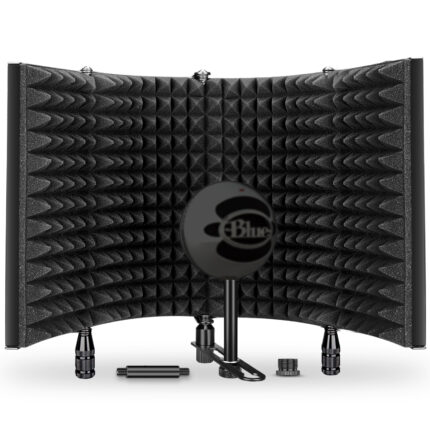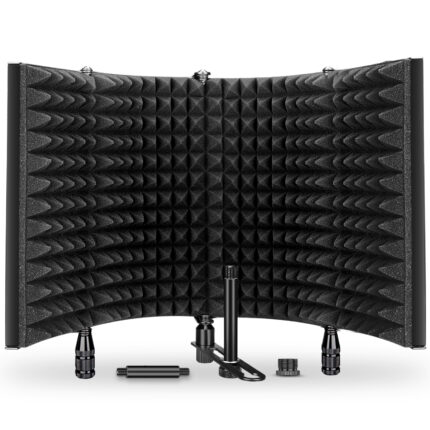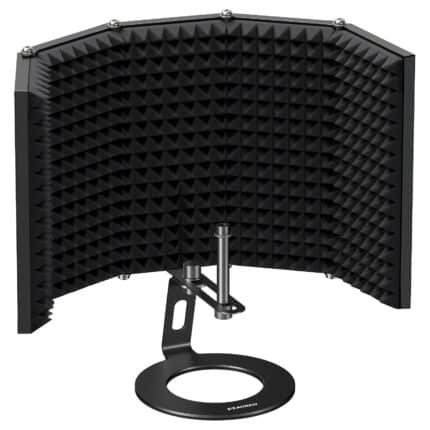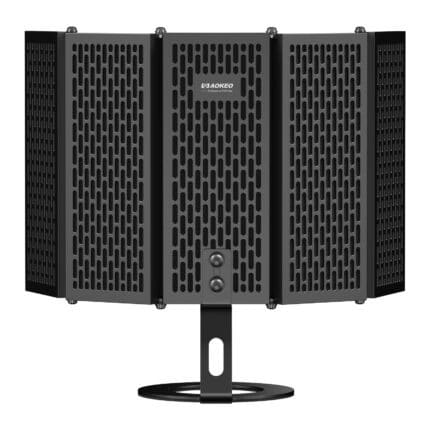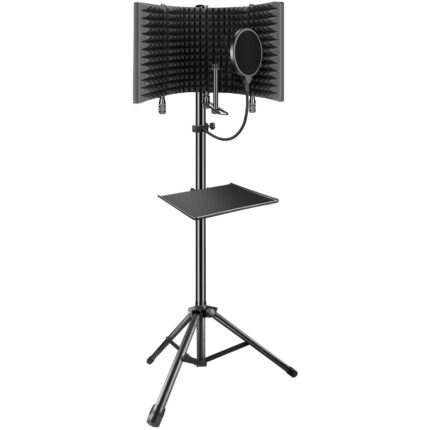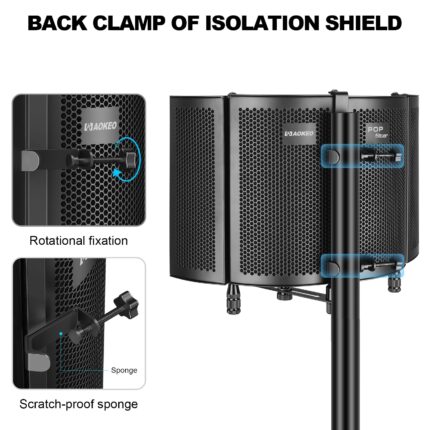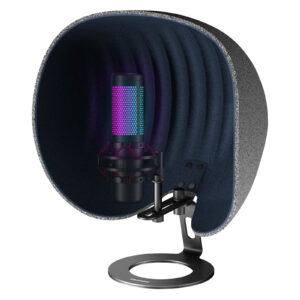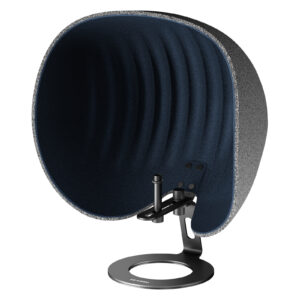Things you should know before buying an acoustic shield
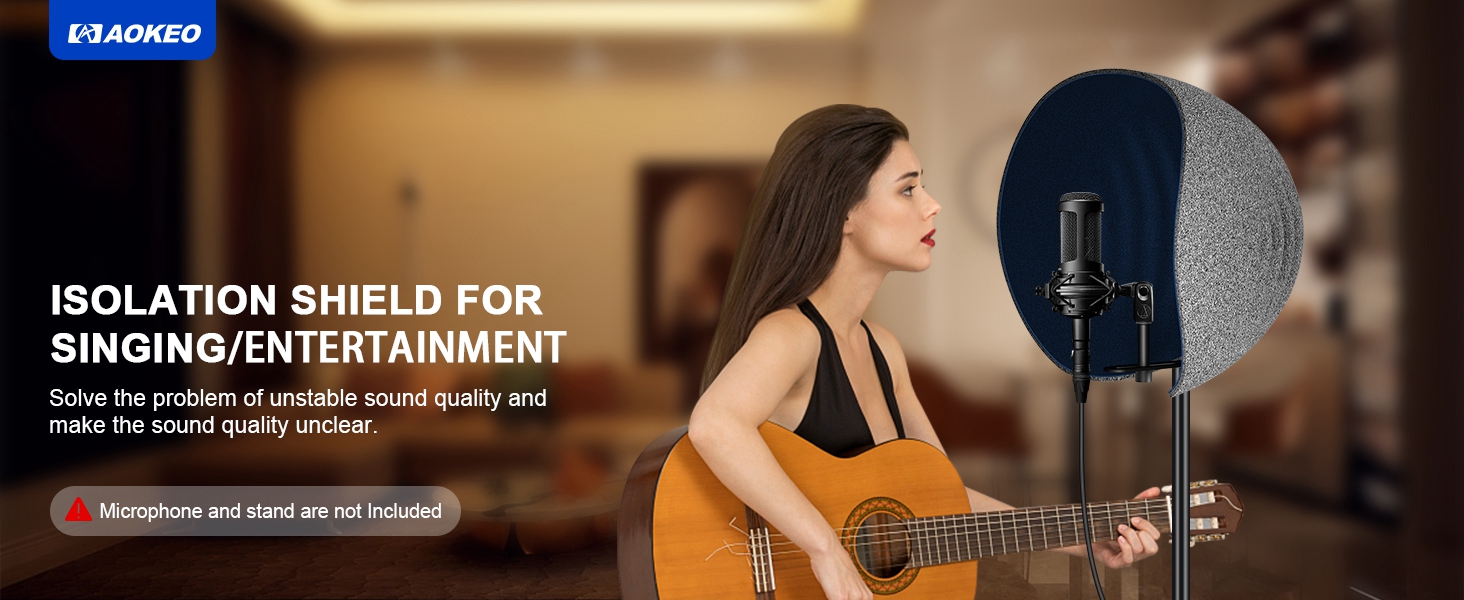
Whether you're recording vocals, playing acoustic guitar, or setting up a podcast, acoustic shields can make a big difference.
But what exactly are they, and are they worth your investment?
In this guide, we’ll cover everything you need to know — from what an acoustic shield is, to how to choose the best one.
Table of Contents
What is an acoustic shield?
An acoustic shield (or microphone isolation shield) is a portable device designed to block unwanted background noise and echoes during audio recordings.
Made from high-density materials like foam or acoustic panels, it wraps around your microphone to absorb sound reflections, ensuring your voice or instrument captures crisp, studio-quality audio—even in untreated rooms.
Are acoustic shields worth it?
Absolutely!
If you’re recording podcasts, vocals, or instruments at home, acoustic shields are a game-changer. They’re affordable, easy to set up, and significantly reduce reverb and ambient noise. Unlike bulky soundproofing setups, shields like the Aokeo Professional Recording Studio Equipment offer a compact, professional solution. For creators on a budget, they deliver 80% of the benefits of a full studio at 20% of the cost.
Aokeo AO-504
Aokeo AO-505
AO-504 with Stand
Features:
- Durable yet lightweight construction makes it easy to transport, set up, and tear down
- Improves a mic's recording environment by blocking background noise and reflections
- Included shaft mounts a mic at the proper level in front of the shield
- Mounts securely to your mic's stand to save space—no need for an additional stand
What is acoustic shield technology?
Modern acoustic shields combine layered noise-absorbing materials with ergonomic designs.
For example, the Aokeo 360° Music Studio Mic Shield uses dual-layer foam and a curved shape to trap sound waves from all angles. Advanced models also include non-reflective surfaces and adjustable clamps to fit popular mics like Blue Yeti, Snowball iCE, and HyperX QuadCast.
Best Acoustic Shield in 2025 | Aokeo Brand
#28 in Recording Studio Acoustical Treatments
The Aokeo 2025 Professional Recording Studio Equipment tops our list for its versatility and performance. Key features include:
Key Features:
- 360° Coverage: Blocks noise from all directions.
- Universal Compatibility: Fits Blue Yeti, SoloCast, HyperX QuadCast, and more.
- Portable Design: Lightweight yet durable for home studios or on-the-go recordings.
- Affordable Price: Studio-quality results without breaking the bank.
Aokeo Microphone Isolation Shield
Ready to upgrade your setup? Find the Aokeo 360° Music Studio Mic Shield today! With thousands of 5-star reviews on Amazon, it’s the go-to choice for podcasters, musicians, and streamers. Shop now and enjoy lightning-fast delivery.
How do you shield an acoustic guitar? (Step-by-Step Guide)
Recording an acoustic guitar cleanly requires minimizing room reflections and background noise. Here’s how to shield it effectively:
- Position the Microphone Close to the Sound Source: Place a condenser or dynamic microphone 6–12 inches away from the guitar’s soundhole or 12th fret (depending on the desired tone). Closer placement reduces the mic’s exposure to ambient noise.
- Use an Acoustic Shield Behind the Microphone: Set up a portable acoustic shield directly behind the mic, facing the guitar. This blocks sound waves from bouncing off walls and returning to the mic, which can cause muddy reverb or “boomy” frequencies.
- Angle the Shield Strategically: Tilt the shield slightly toward the guitar to create a semi-enclosed space. This focuses the mic on capturing direct sound while absorbing reflections from the room.
- Add Absorption Panels to Walls (Optional): For even cleaner recordings, install foam panels or bass traps on nearby walls. This reduces overall room echo, making the shield’s job easier.
- Experiment with Mic Placement: Move the mic closer to the fretboard for brighter tones or toward the body for warmer lows. Adjust the shield’s position accordingly to maintain isolation.
- Record a Test Clip and Monitor: Play a short riff and listen for unwanted echoes or background noise. Reposition the shield or mic if needed until the recording sounds dry and focused.
By isolating the guitar’s natural sound from room acoustics, you’ll achieve clearer, more professional recordings without post-processing hassles.
Is an Acoustic Shield Right for You?
If you’re recording in a space with hard surfaces, echoes, or unpredictable background noise—and you’re not ready to commit to full soundproofing—an acoustic shield might be your perfect fix. It’s a simple, budget-friendly tool that tackles common audio issues without overhauling your room.
Who should consider using one:
✔️ Home studio creators – Turn your untreated bedroom or living room into a recording-ready space.
✔️ Podcasters and YouTubers – Eliminate distracting reverb and ensure your voice sounds polished.
✔️ Musicians – Guitarists and vocalists can capture cleaner takes by reducing "room noise" during recordings.
✔️ Remote workers – Block out background chatter or echoes during calls in noisy home offices.
